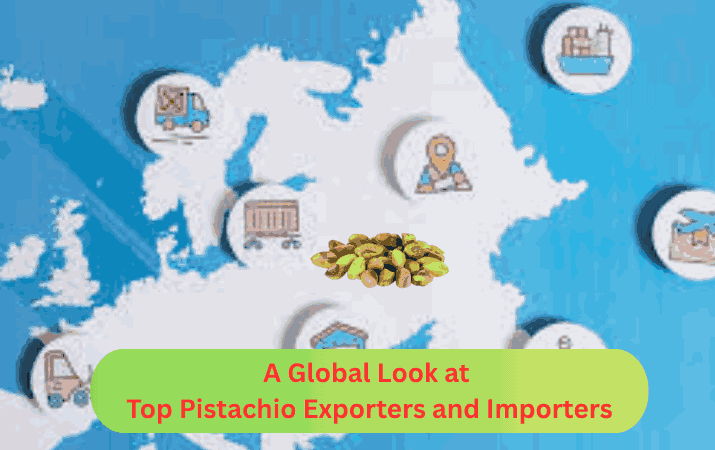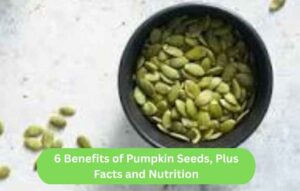
A Global Look at Top Pistachio Exporters and Importers

Introduction
Pistachios are not just delicious nuts—they are a global commodity with an intricate network of production, export, and import. These nuts are prized for their flavour, nutritional benefits, and versatility in snacks, desserts, and cooking. Understanding the countries that lead in pistachio trade helps us grasp global market trends and the economic significance of this small yet valuable nut. Primenuts blogs explore about the data of a Global Look at Top Pistachio Exporters and Importers countries around the world.
Understanding Pistachio Production Worldwide
Pistachios are mostly grown in a few places around the world. The temperatures of these countries are ideal for growing pistachios. The summers are hot, the winters are cool, and the weather is dry. The best producers use both traditional and current farming methods to achieve the highest quality and yields.
United States
California grows most of the pistachios in the United States and produces most of the country’s crop. People love U.S. pistachios because they’re all the same size, colour, and taste. The business has been steadily expanding thanks to high demand around the world and new technologies for watering and gathering crops.
Iran
Iran has grown pistachio trees for hundreds of years. People from the areas of Kerman and Yazd are known for growing delicious nuts. Iranian nuts have a unique flavour and come in many varieties, such as the soft and tasty Fandoghi and Akbari types.
Turkey
Pistachios are grown mostly in the Gaziantep area of Turkey. They are famous for having a strong smell and a slightly sweet taste. Pistachios from Turkey are used in many traditional sweets, like baklava and Turkish delight, which has helped keep demand high both in Turkey and around the world.
Major Exporters of Pistachios
The pistachio export market demonstrates the capacity for production and the effectiveness of trade. Strong agricultural industries, processing centres, and well-run logistics networks often help countries that are large exporters.
United States
It sends nuts to more than 100 countries, making the U.S. the biggest pistachio producer in the world. Because of their consistent quality and strong quality control standards, American pistachios are the most popular in Asia, Europe, and the Middle East. Over the past ten years, the U.S. has become a major player in world trade as its exports have slowly grown.
Iran
Iran is another big supplier, mostly to Asia and Europe. Iranian peanuts are very popular because they taste and look different from other kinds. But trade sanctions and geopolitical issues have sometimes made it harder for the country to sell and get its goods to markets.
Turkey
Turkey exports a significant amount of its pistachios, primarily to Europe and the Middle East. To meet the needs of a wide range of customers, Turkish pistachios are often shipped whole or processed, such as roasted or salted.
Dubai, United Arab Emirates
Instead of manufacturing many products, the UAE, particularly Dubai, serves as a hub for trade. Because the UAE is in a good position and has good logistics systems, pistachios that are brought into the country are often sent back out to other parts of the Middle East.
Netherlands
The Netherlands is now an important hub for the trade of pistachios in Europe. Nuts that are brought to the EU are packed and sent to several EU countries. Dutch exporters are known for having excellent supply lines and following quality standards set by Europe.
Top Pistachio Importers
Importers are typically countries where domestic production is insufficient to meet demand, or where pistachios are a popular part of the diet. These countries have growing consumer markets and increasing interest in healthy snacks and gourmet foods.
European Union
The EU collectively is the largest importer of pistachios, with Germany, Italy, and Spain leading the demand. Pistachios are popular for confectionery, baking, and direct consumption. European consumers also value high-quality, organic, and sustainably sourced nuts.
China
China’s pistachio imports have surged recently. Rising incomes, health awareness, and the popularity of nuts in the snacking culture have fuelled demand. Imported pistachios often compete with domestic varieties to meet the growing market needs.
India
India is a significant importer of pistachios, largely due to their use in traditional sweets, desserts, and festive dishes. Consumers in urban areas increasingly view pistachios as a healthy snack, contributing to steady import growth.
United Arab Emirates
The UAE imports large quantities of pistachios to satisfy both domestic consumption and re-export demand. The country’s position as a logistics hub ensures that imported nuts reach markets across the Middle East efficiently.
Vietnam
Vietnam has emerged as a fast-growing market for pistachios. Changing diets, increased awareness of health benefits, and rising disposable incomes have contributed to a rapid increase in imports.
Emerging Trends in Pistachio Trade
Global pistachio trade is influenced by evolving consumer preferences, climatic conditions, and market innovations.
• Rising Demand for Health Foods: Nuts, including pistachios, are increasingly seen as healthy snacks, rich in protein, fibre, and essential nutrients.
• Shift to Processed Products: Roasted, salted, or flavoured pistachios are gaining popularity, driving export growth from producing countries.
• Diversification of Markets: Emerging markets in Asia and the Middle East are becoming key importers, reducing dependency on traditional markets like Europe.
• Climate and Production Risks: Droughts, extreme weather, and water scarcity in major producing regions can affect global supply, influencing prices and trade volumes.
Conclusion
Pistachios are still a big deal around the world, with a small group of countries making them and a large group of countries buying them. The US, Iran, and Turkey make and send the most goods abroad. The EU, China, India, and the UAE bring in the most goods. By learning about this global trade network, you can learn about market trends, customer demand, and how growing pistachios affects the economy. The pistachio business will continue to change as new markets open up and tastes shift, but the nut will still be one of the most valuable in the world.



